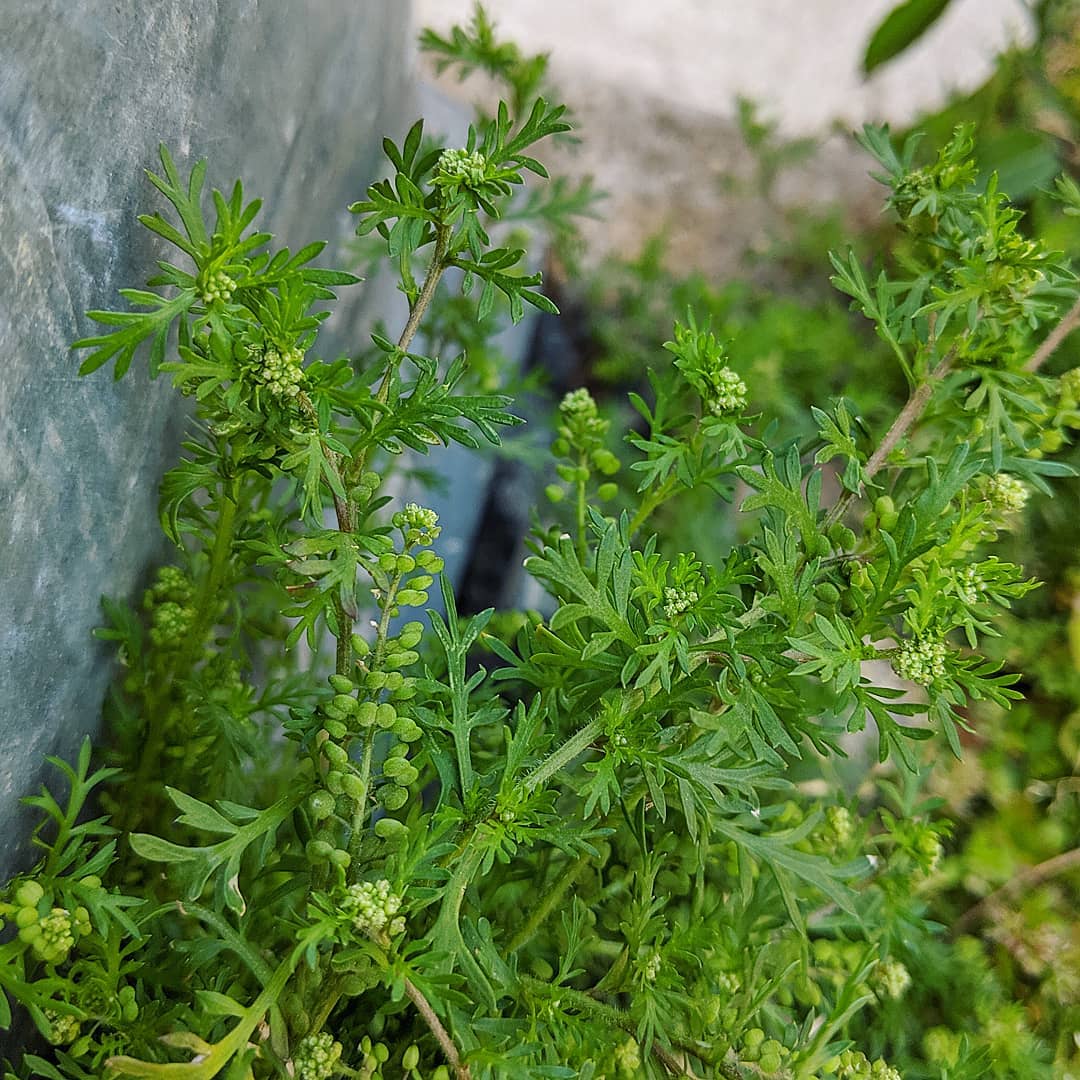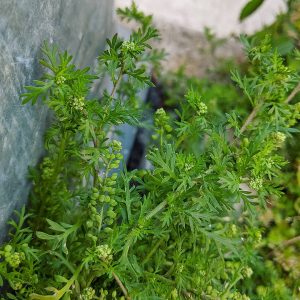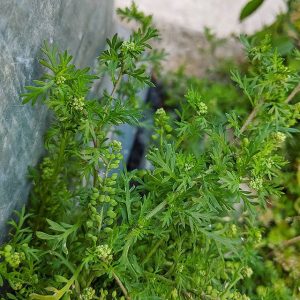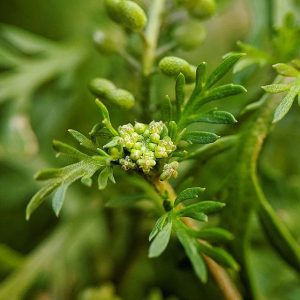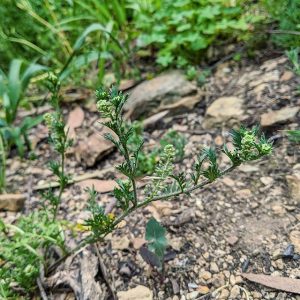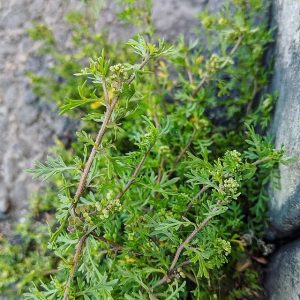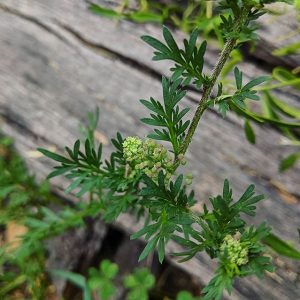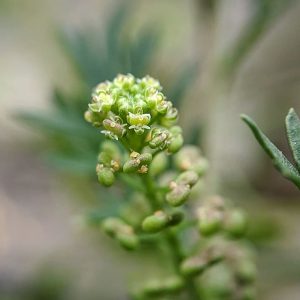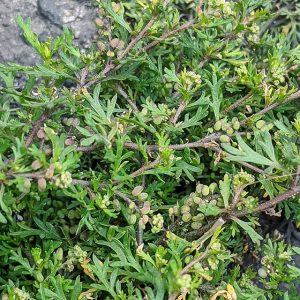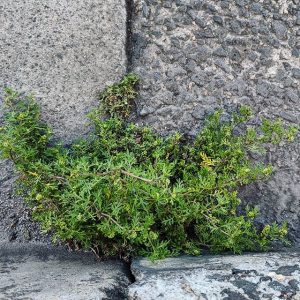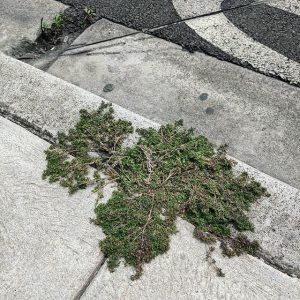Lesser Swine’s Cress (Lepidium didymum), a South American member of the mustard family introduced to Europe by early colonial transfers, and from there to Australia as a contaminant of imported seed.
The species appears to have been first collected in Australia at Brisbane in 1843, and in the Adelaide Hills in 1846 by von Mueller. The first Victorian collections were made in 1882 at Queenscliff and in 1887 in the Macedon Ranges.
Lesser Swine’s Cress was one of three Lepidiums identified by CSIRO in the 1940s and 1950s as having a major role in the tainting (off-flavouring) of Australian cream and butter. Responsible for introducing ‘cress flavours’ to domestic and export products, these plants can become problematic for dairying activities when drought or other conditions restrict access to more palatable fodder. Various pastureland improvement programs were undertaken in the mid-20th c. under the auspices of the Commonwealth’s peak research body, aiming to reduce the effects of weed tainting on Australian products; these included promotion of succulent grass varieties (ie. Scrobic Paspalum) to reduce the presence of Lepidium in pasturage.
A population of Lesser Swine’s Cress appeared on a Northcote kerb at the completion of a recent mid-rise building, presumably brought to this street corner as a material contaminant during construction. Another population photographed this spring was noticed on unconsolidated dry earth slope in Yarra Bend Park, betwixt the Oxalis, Enchylaena and Opuntia.
View Original Post on Instagram
Search for information about Lepidium didymum in the Flora of Victoria
View information and occurrences of Lepidium didymum on the Atlas of Living Australia
